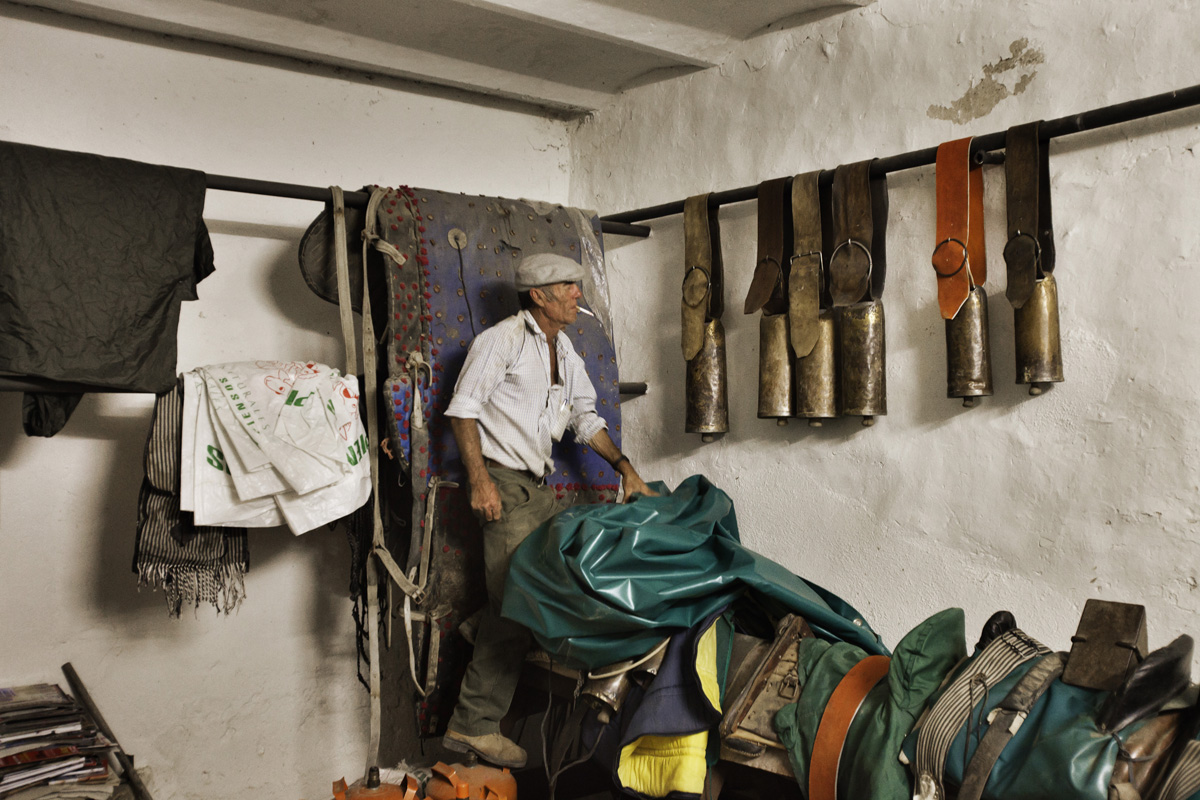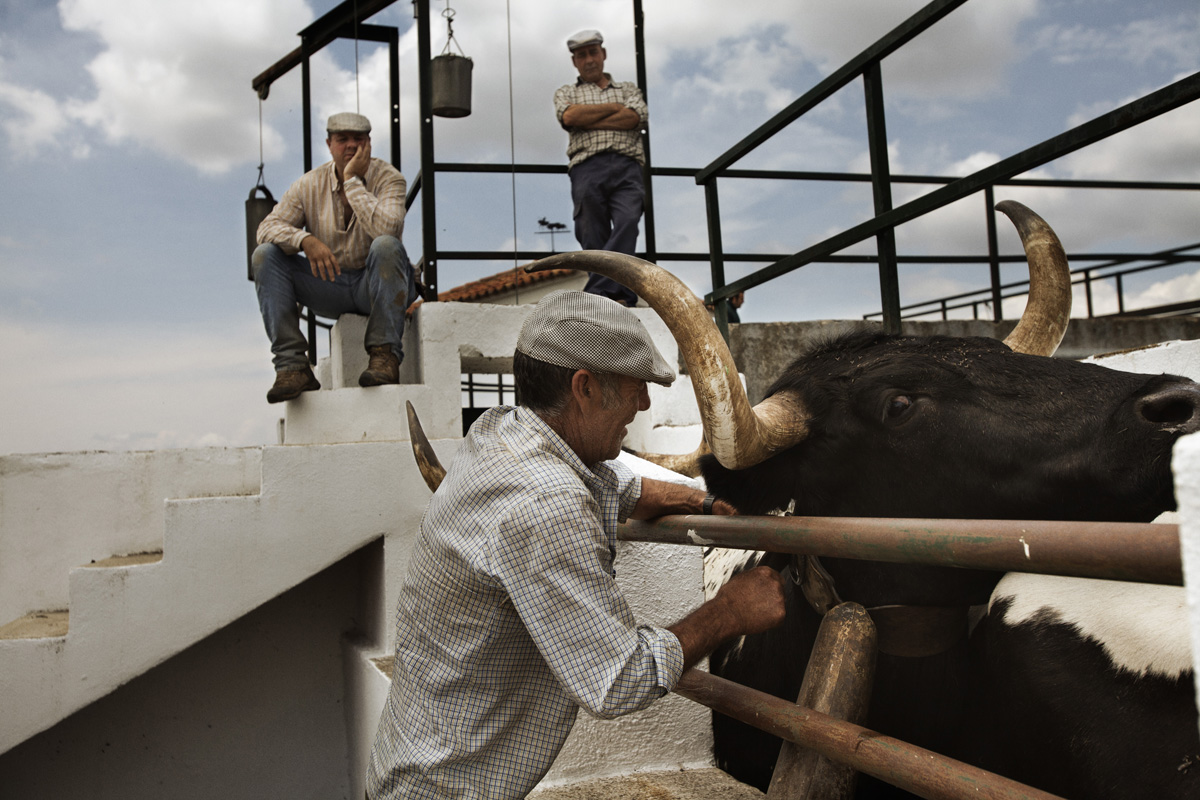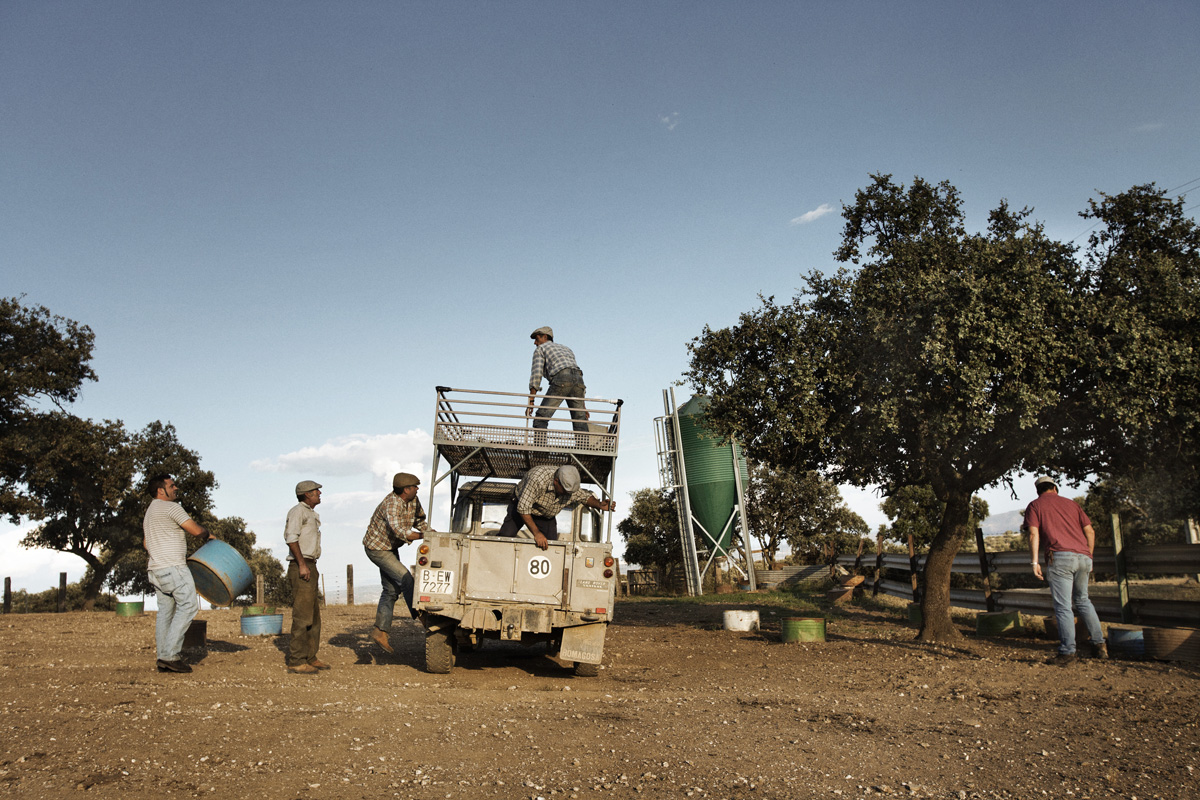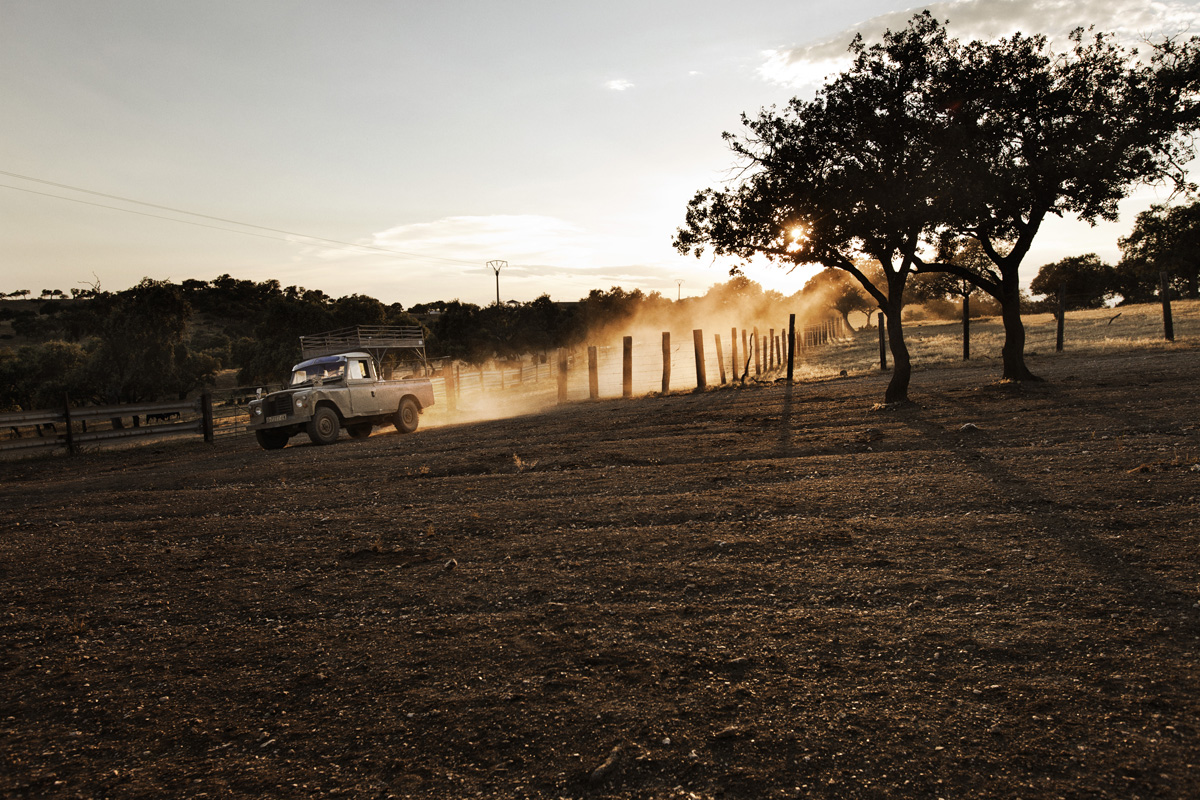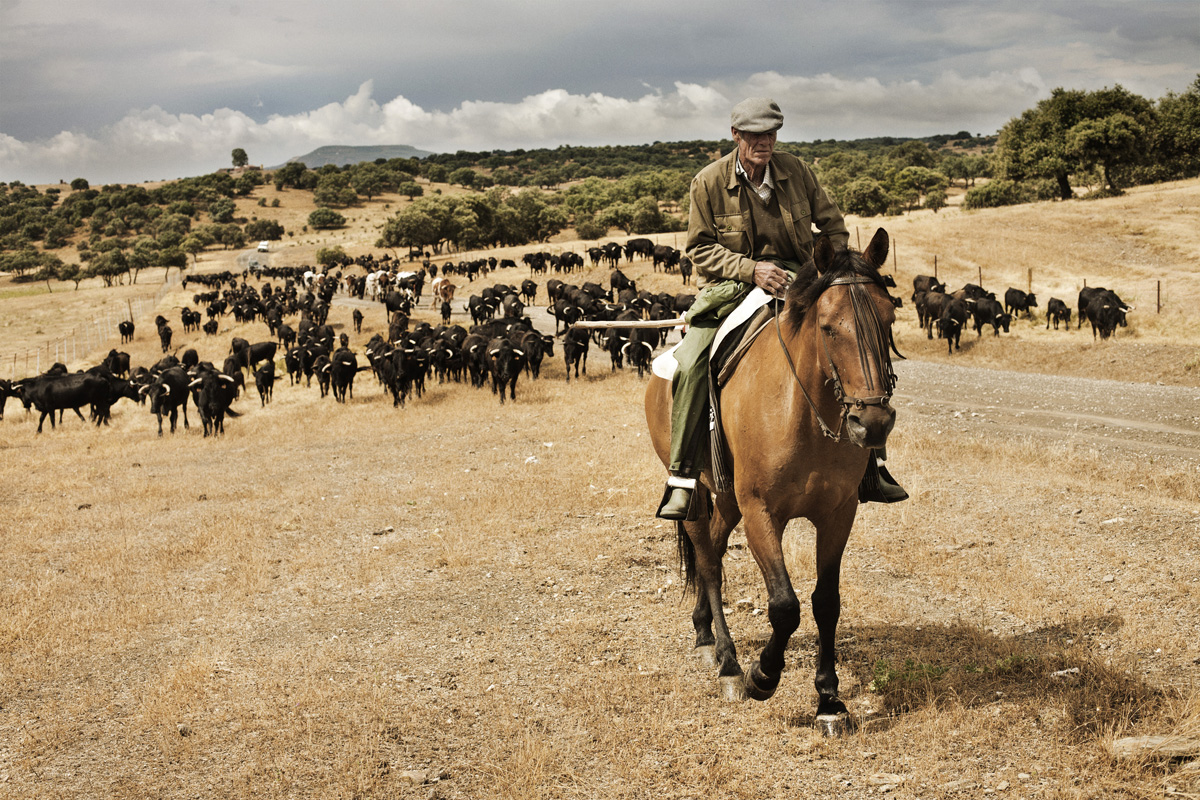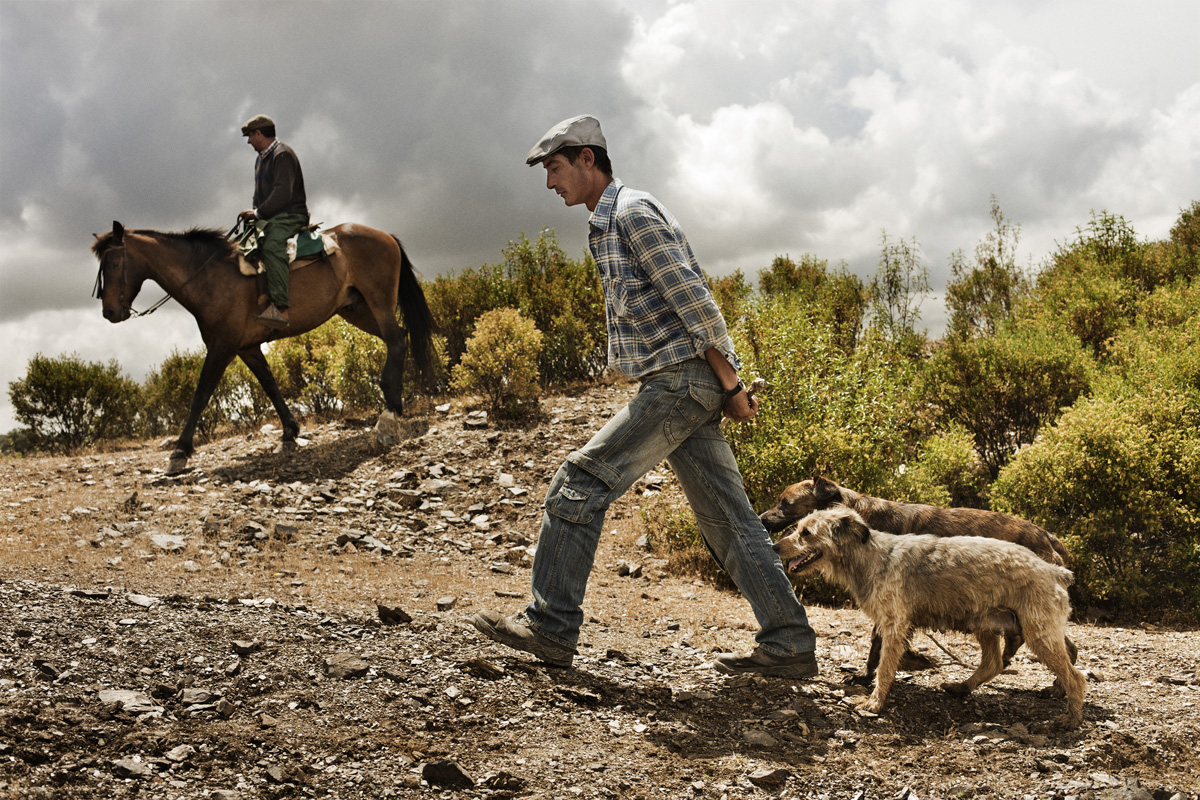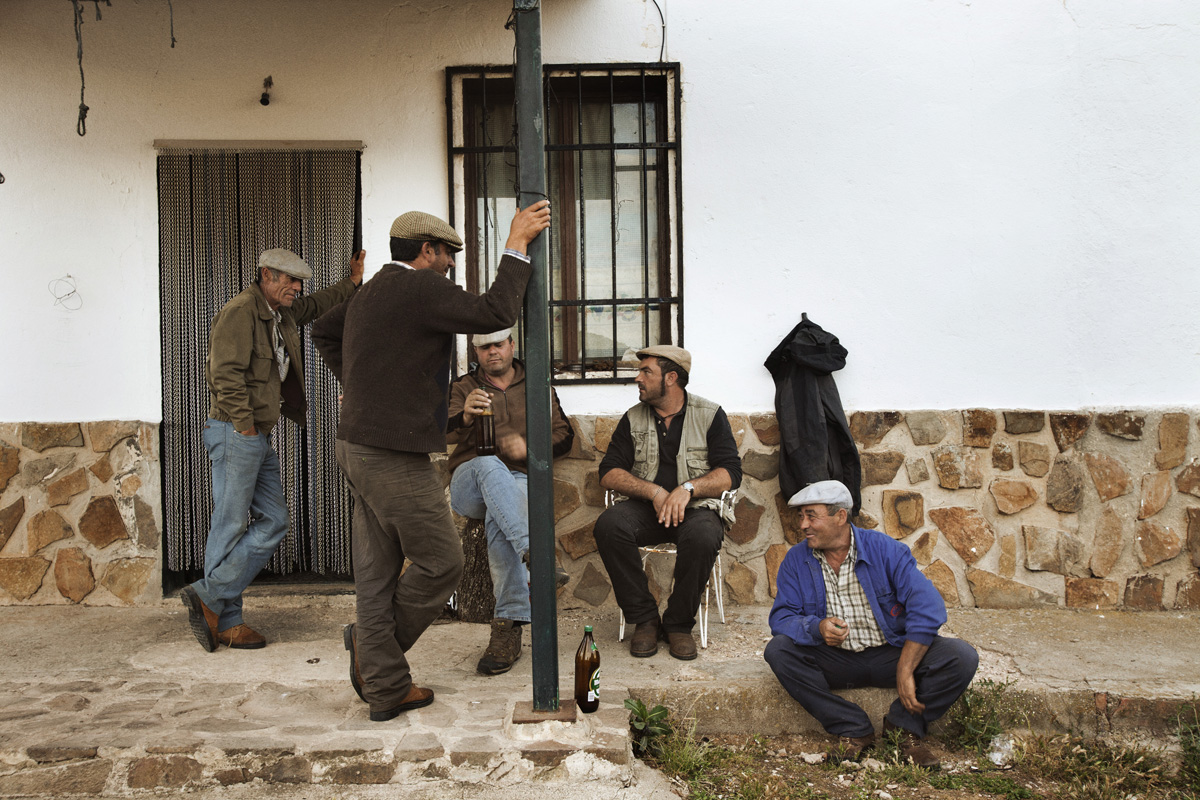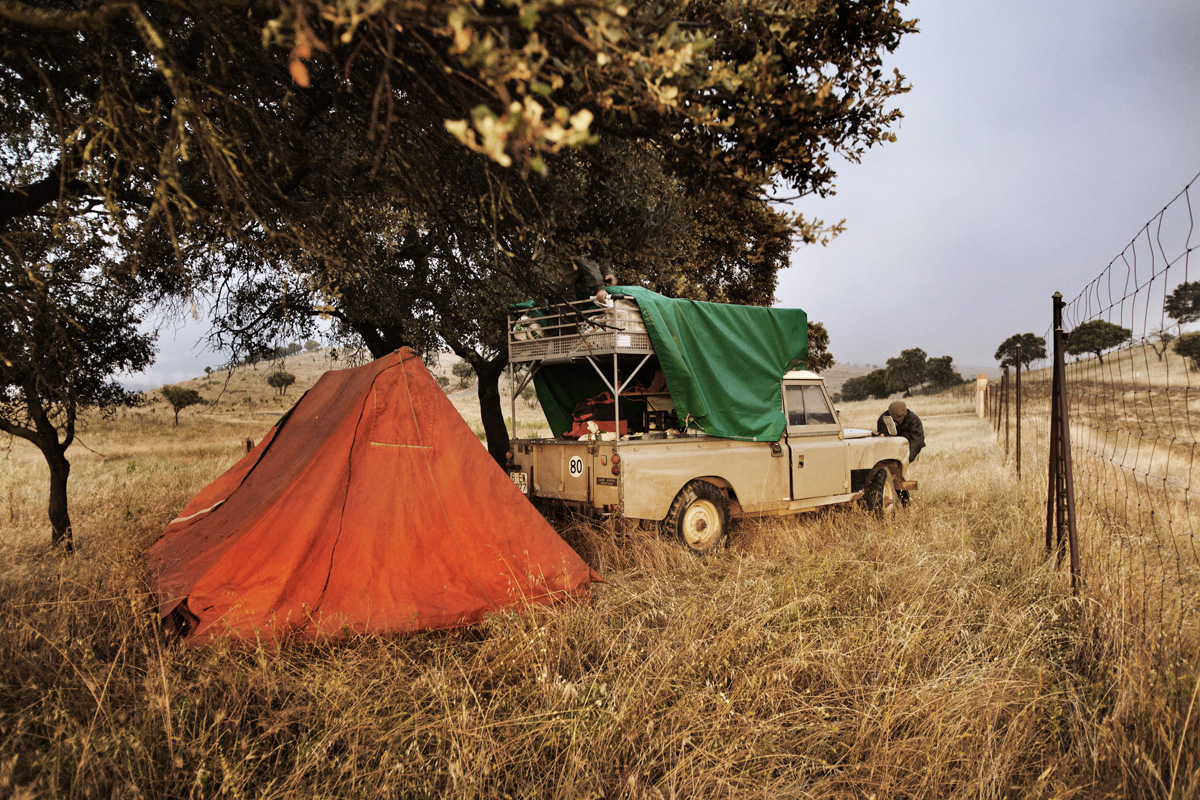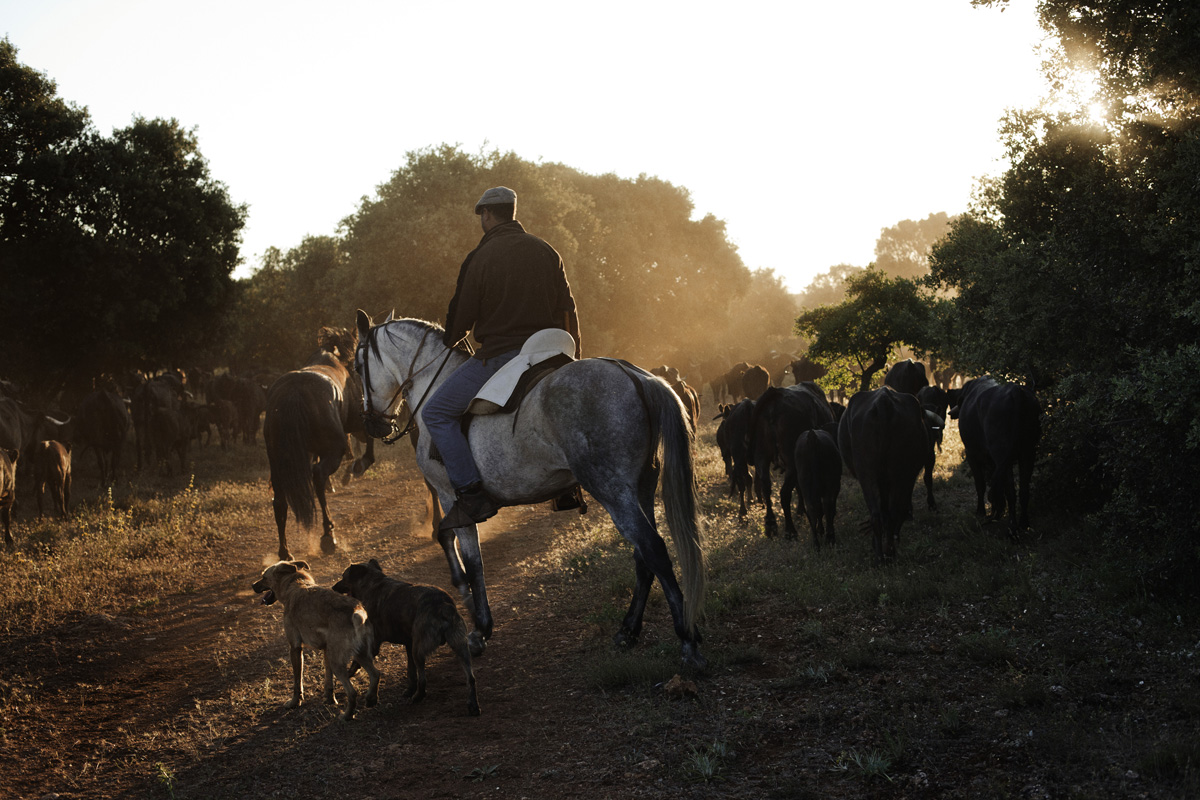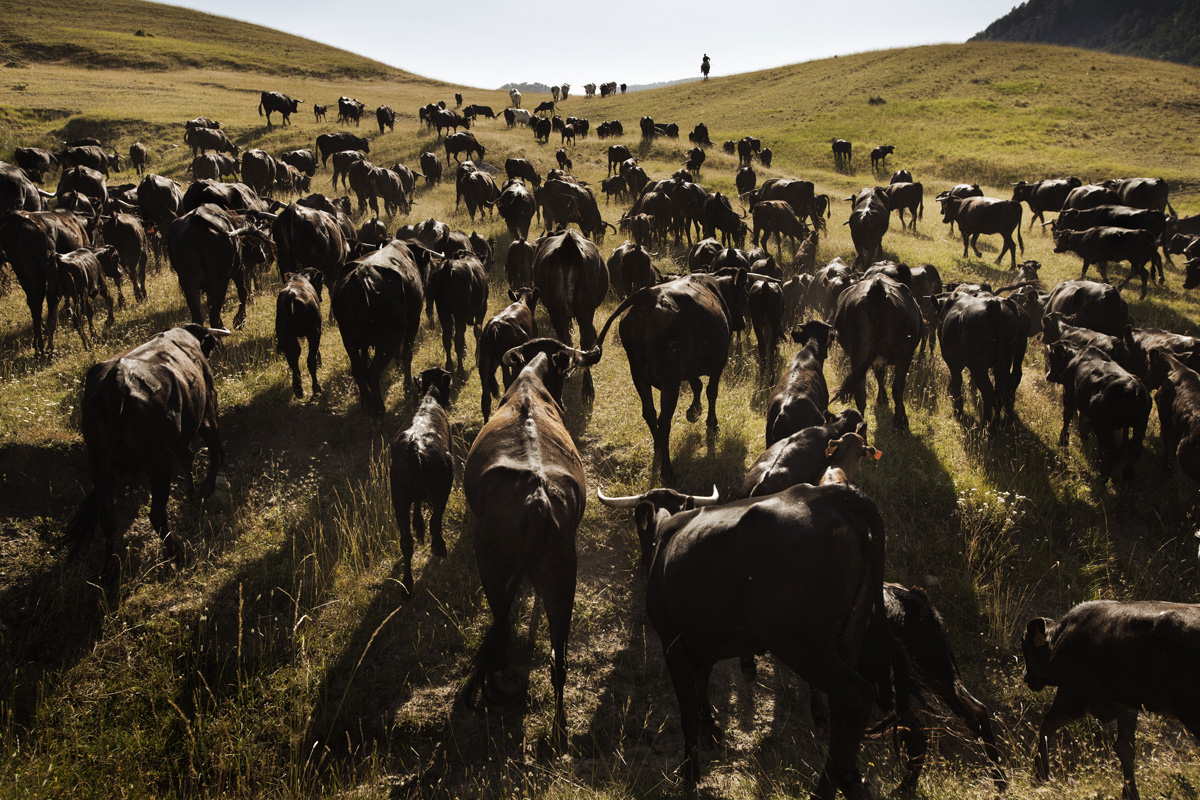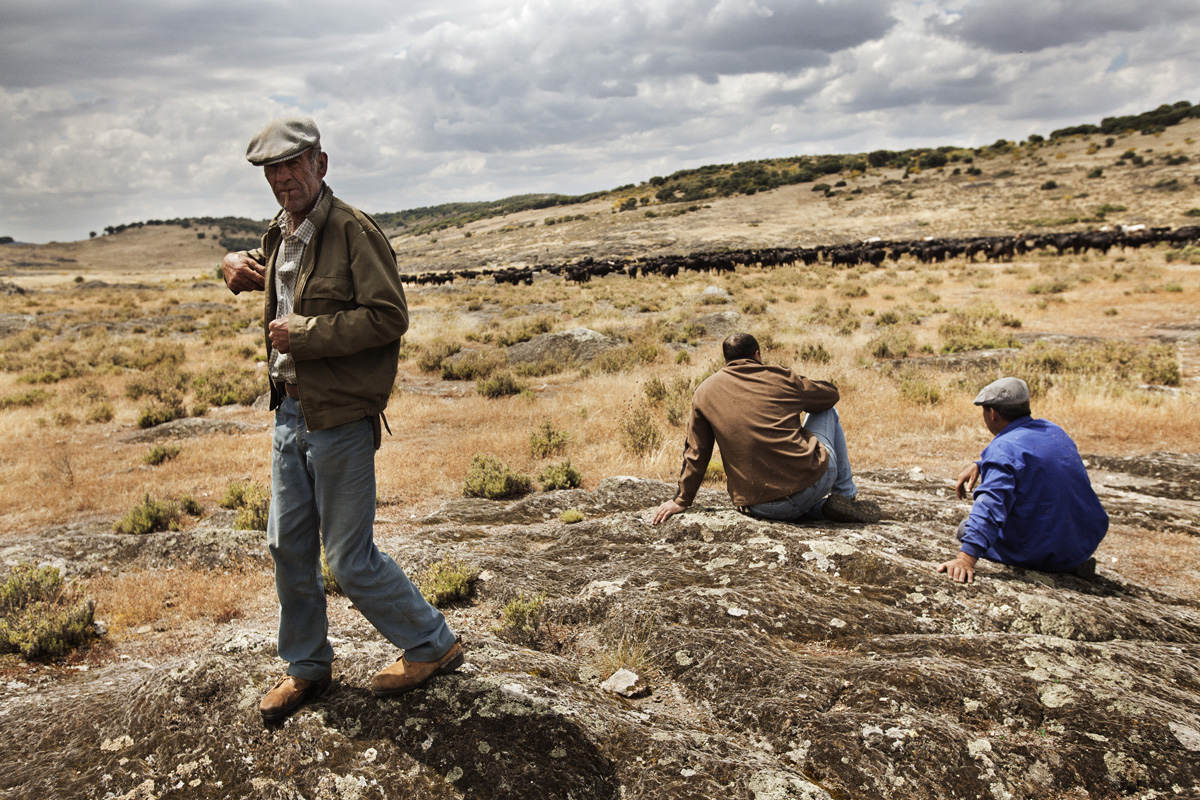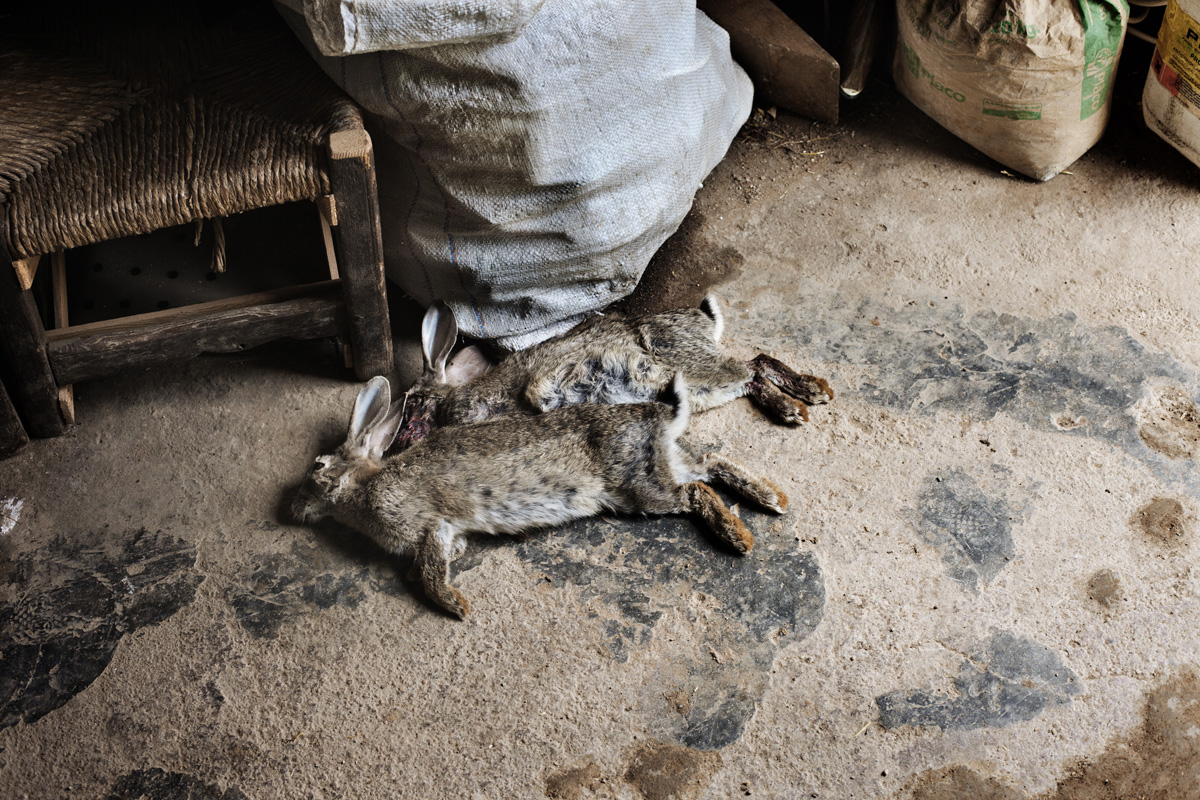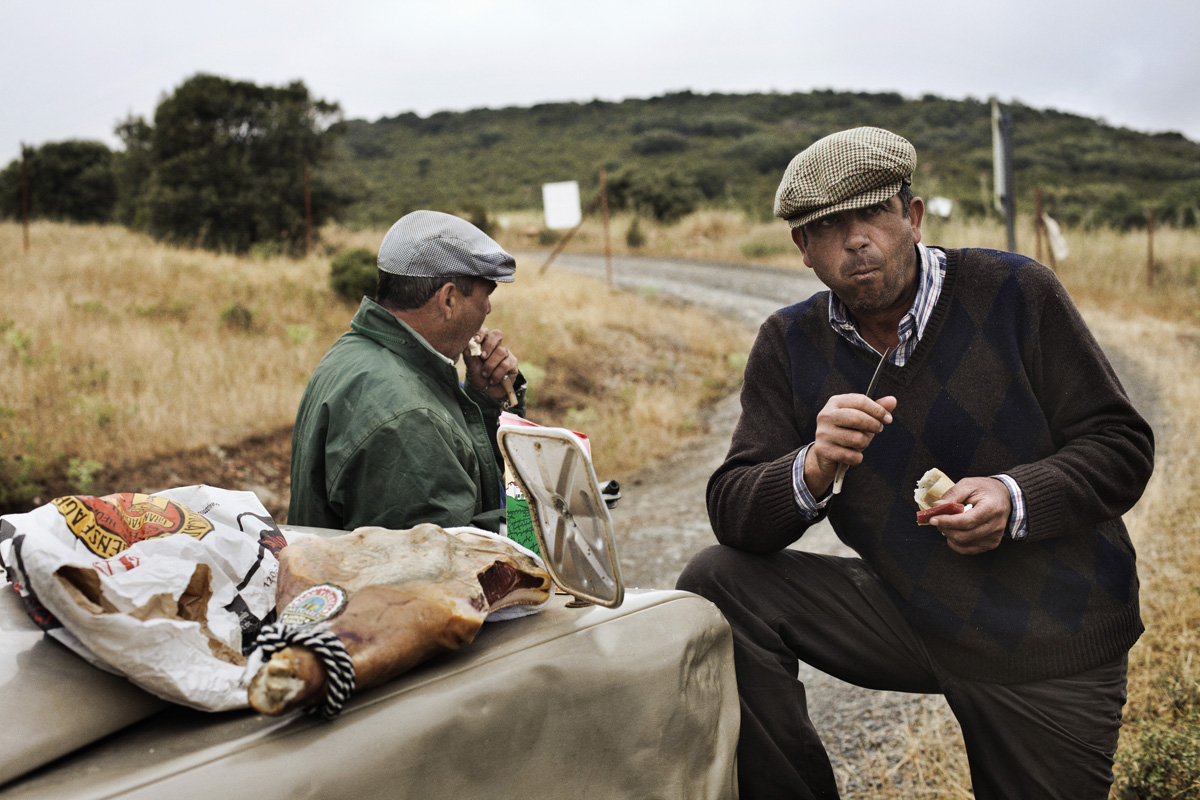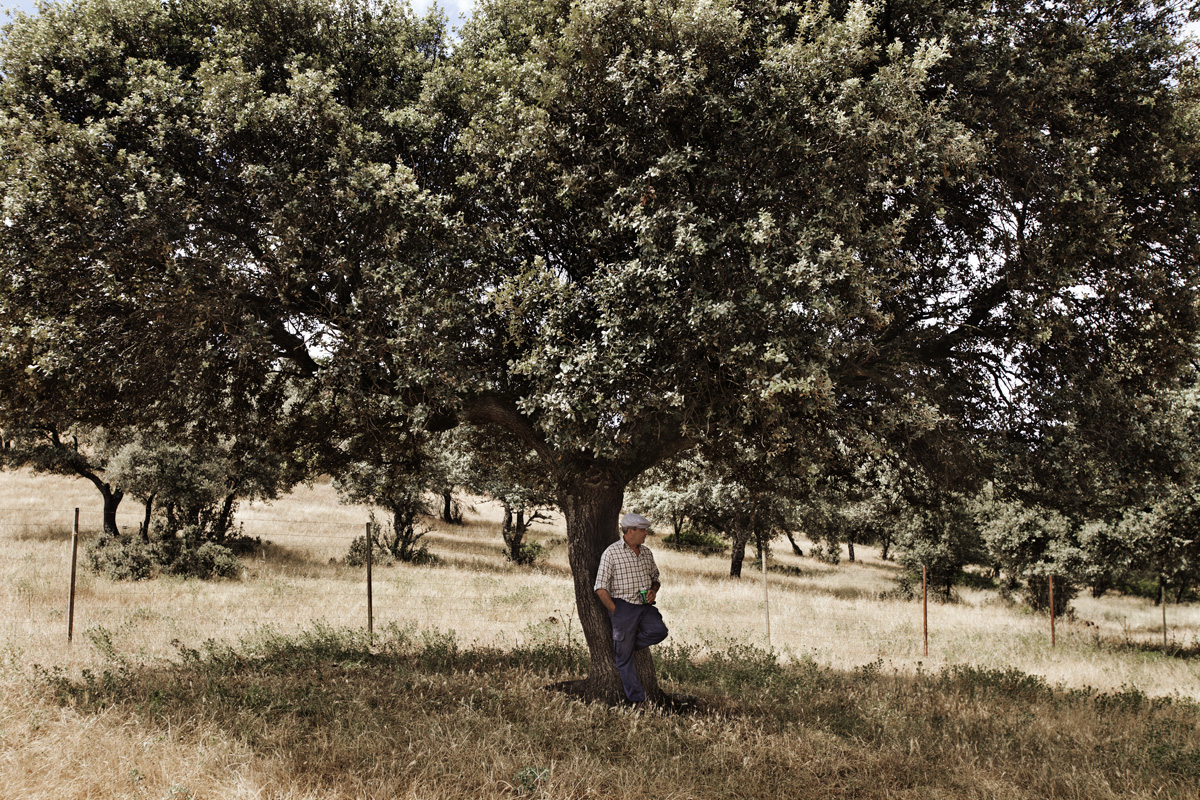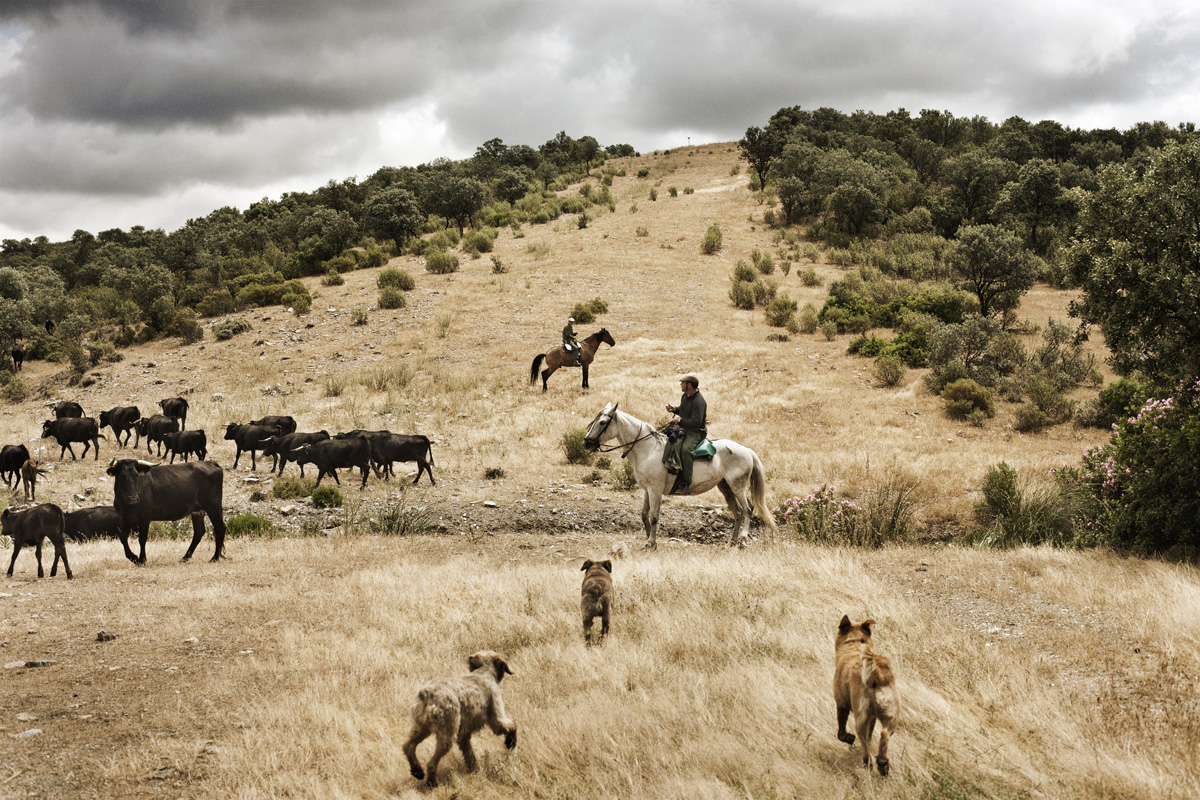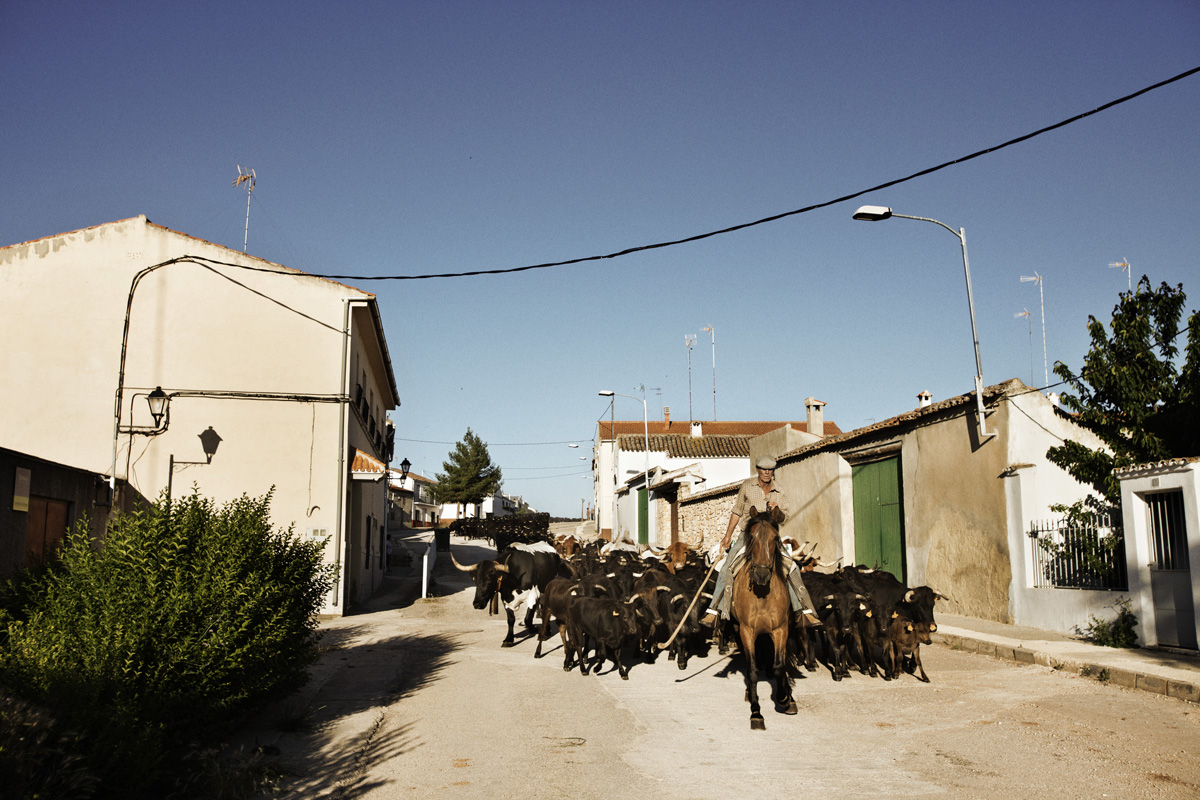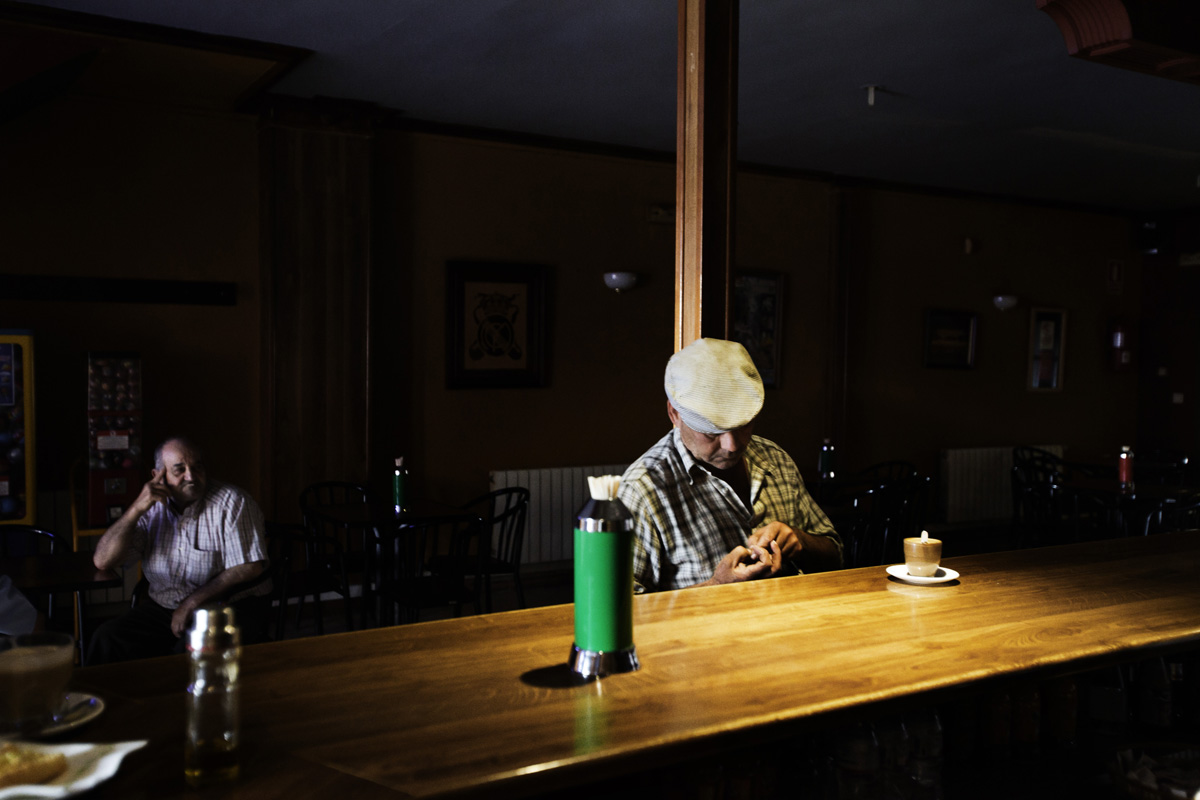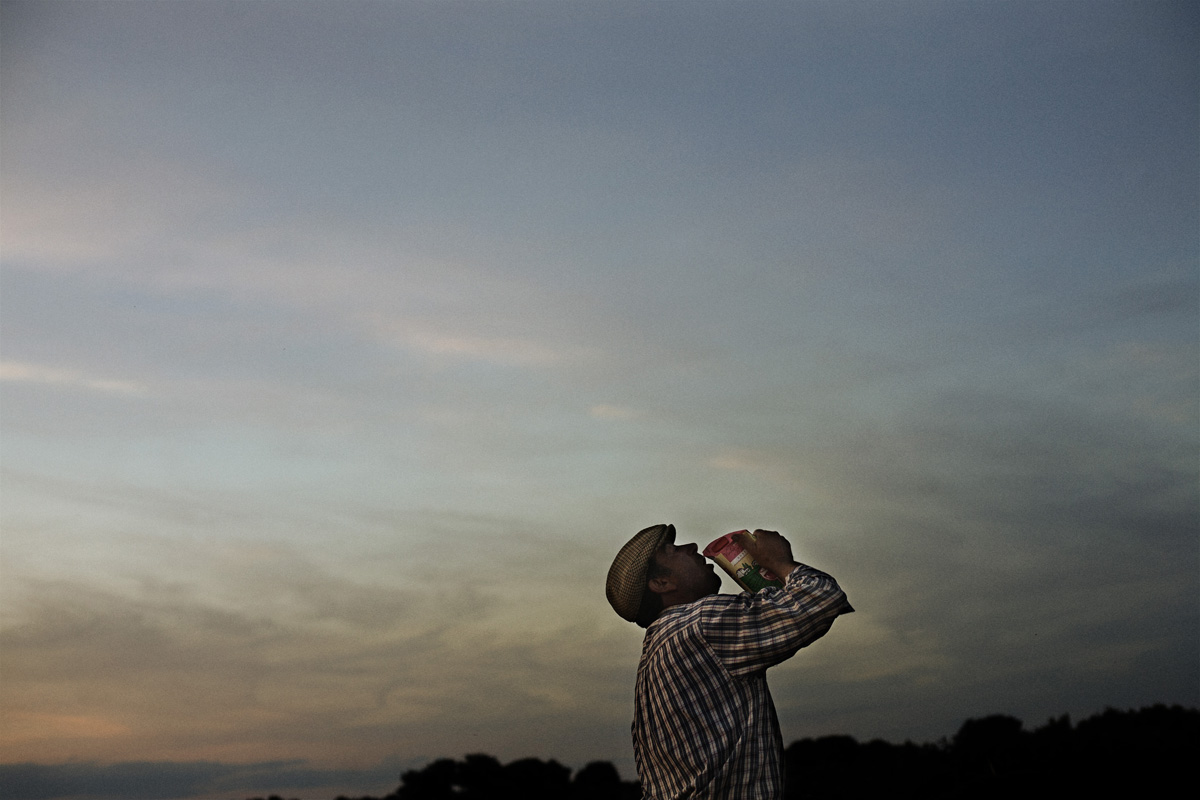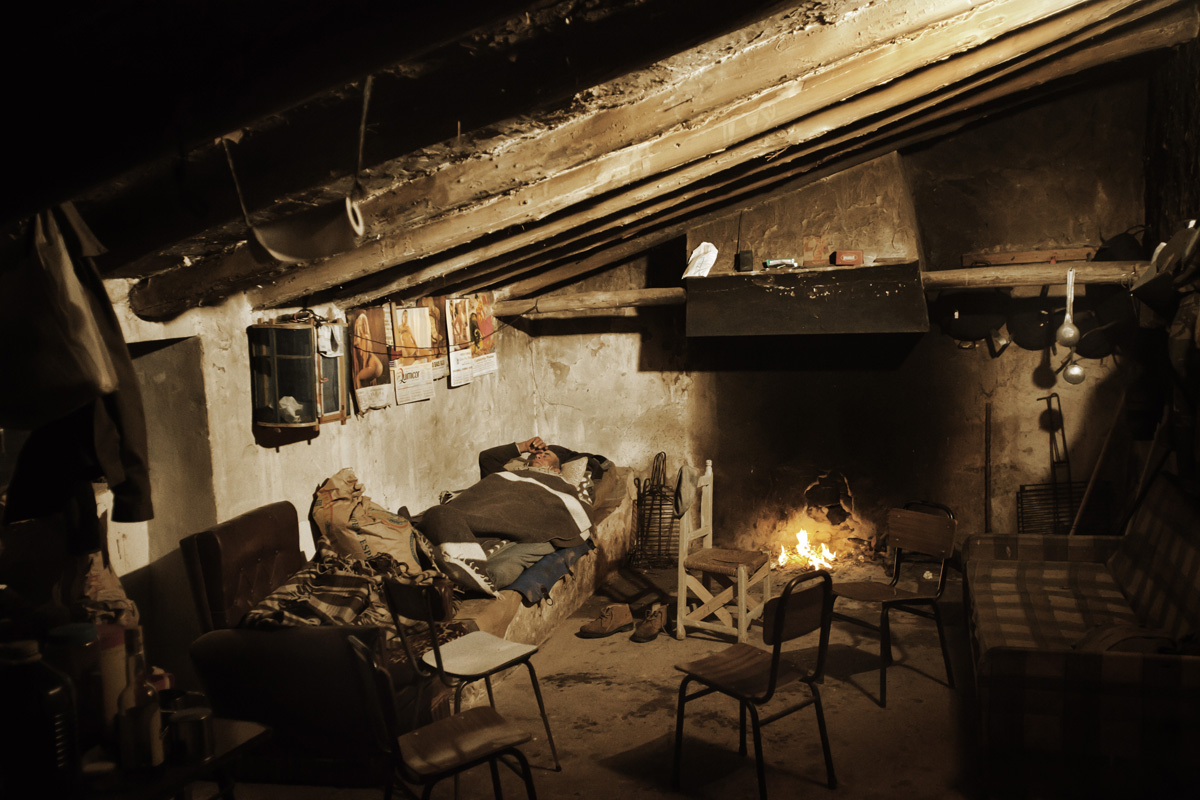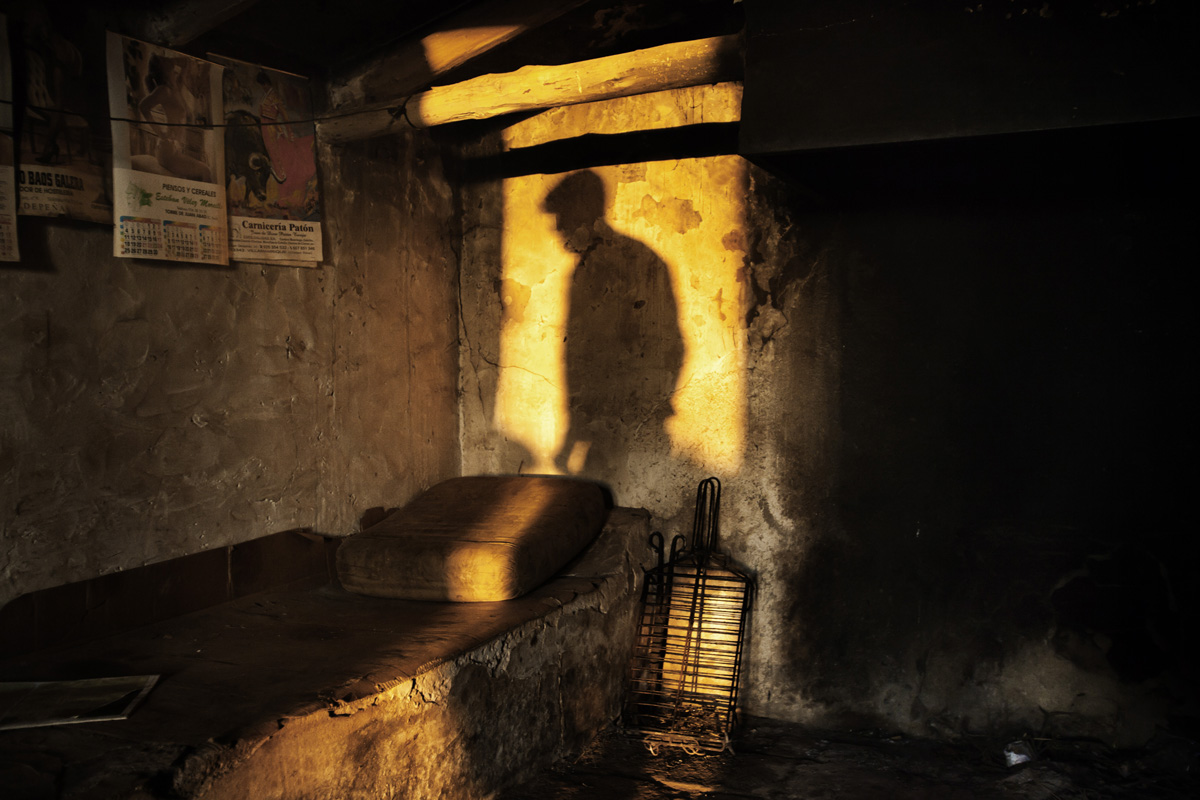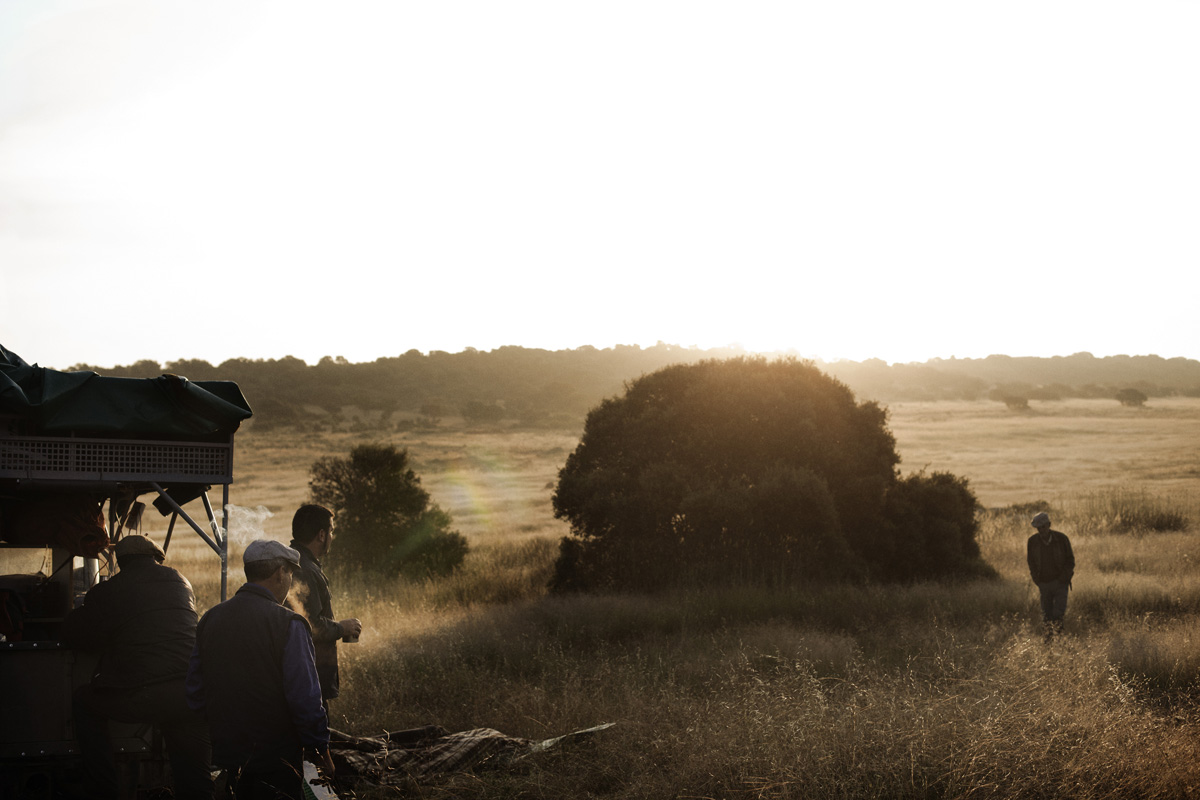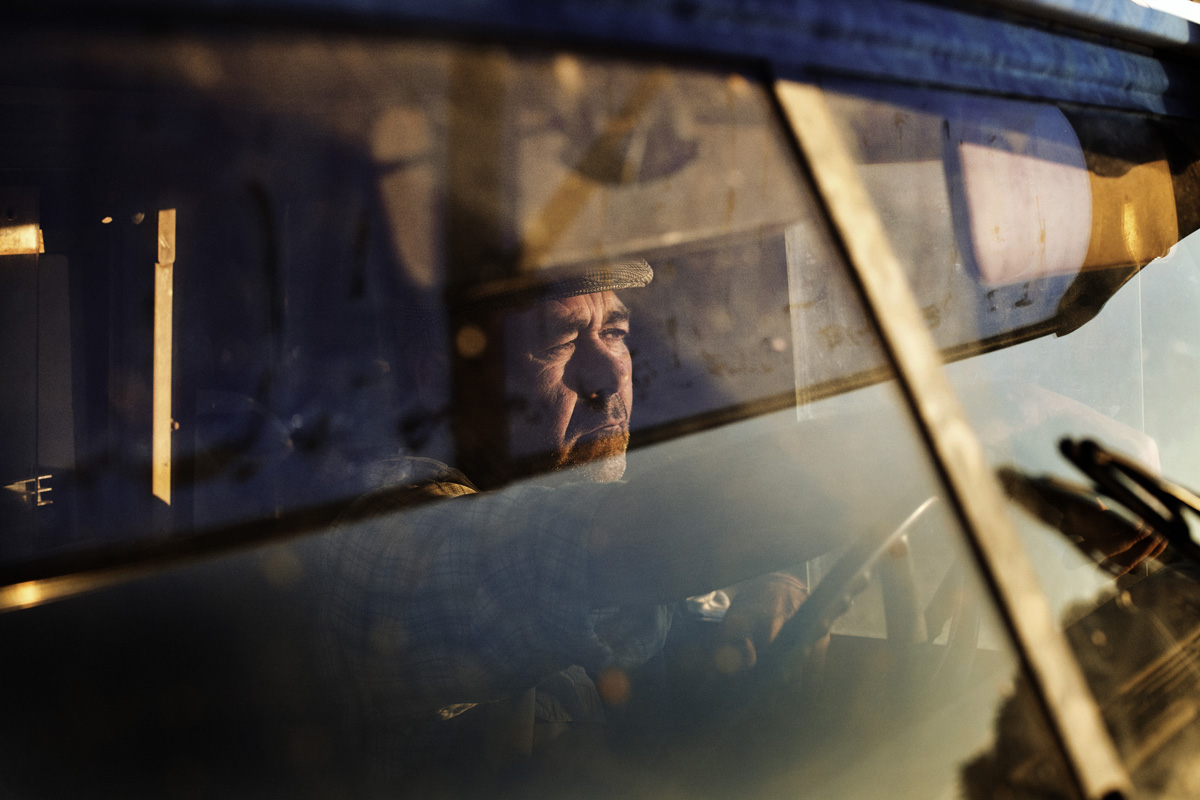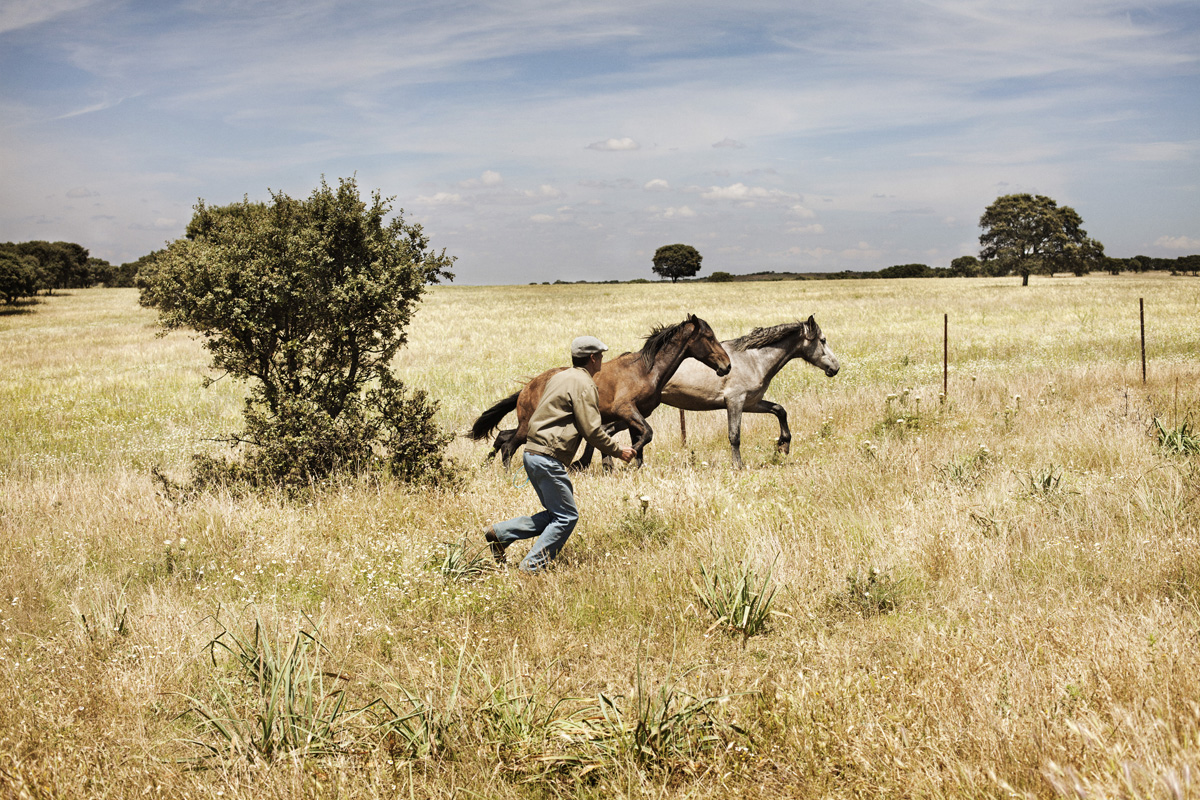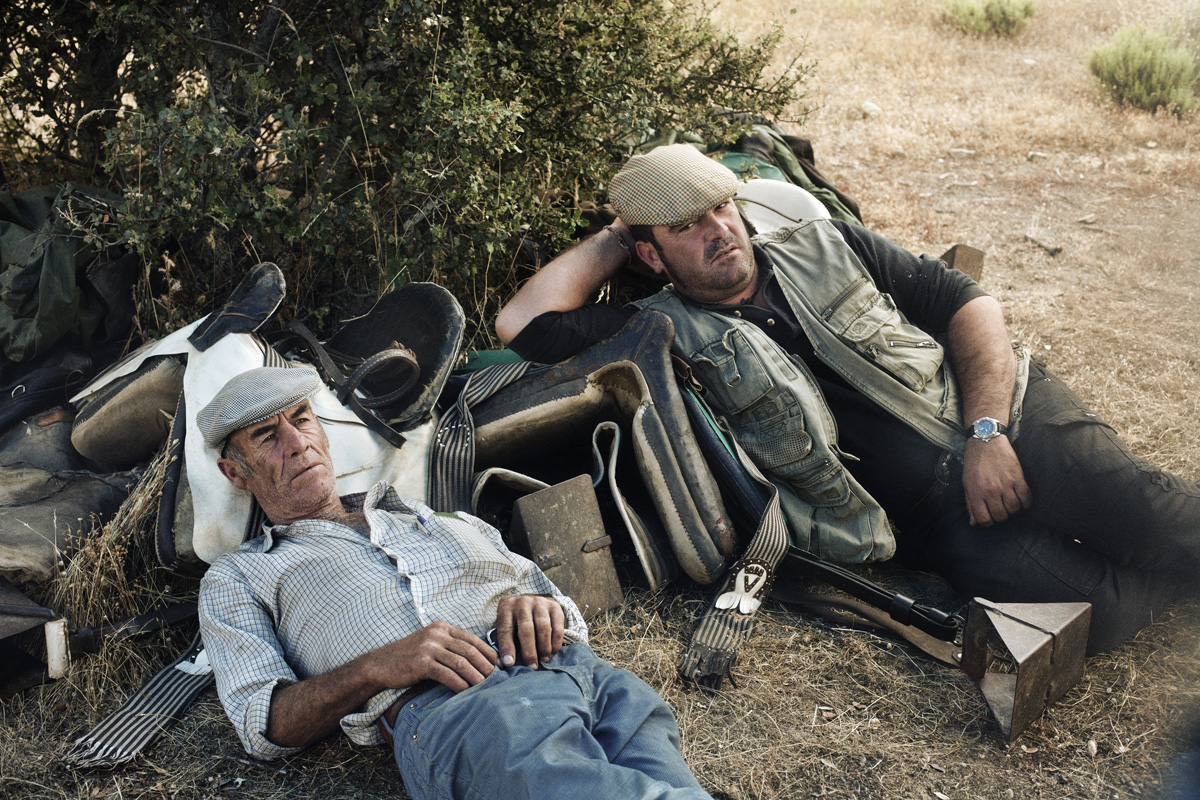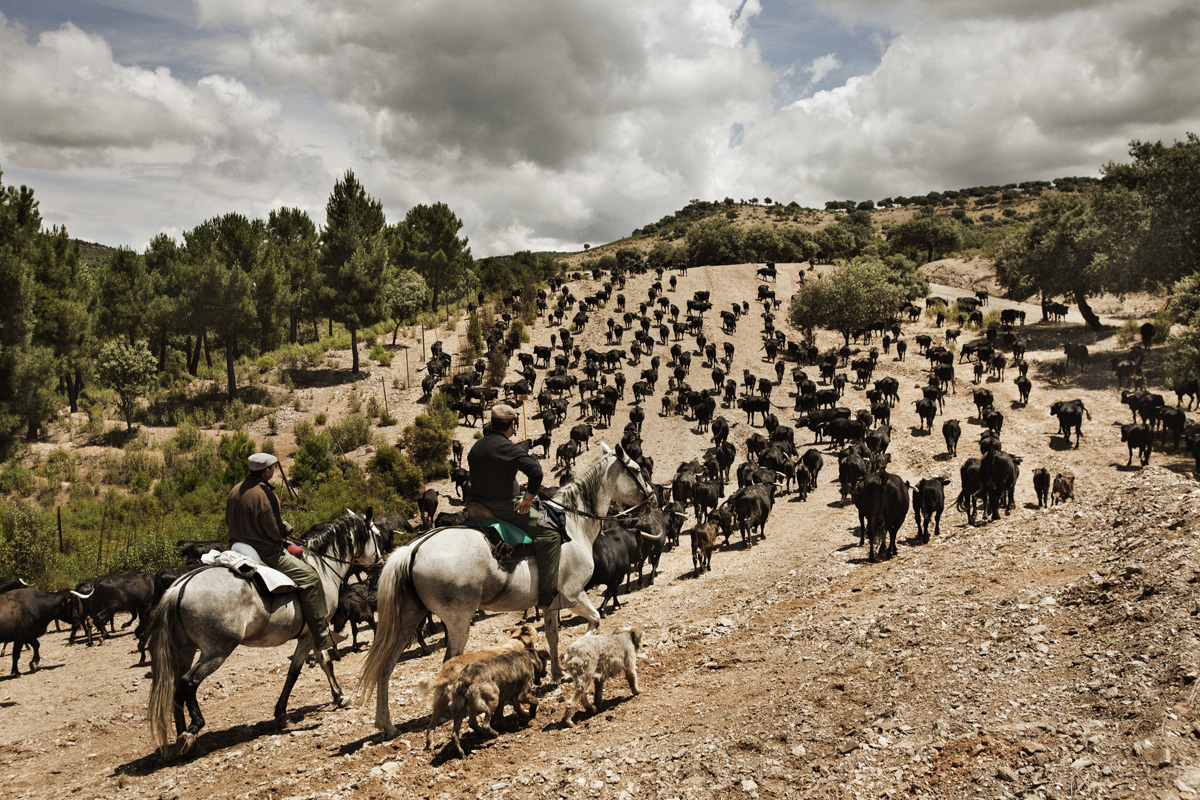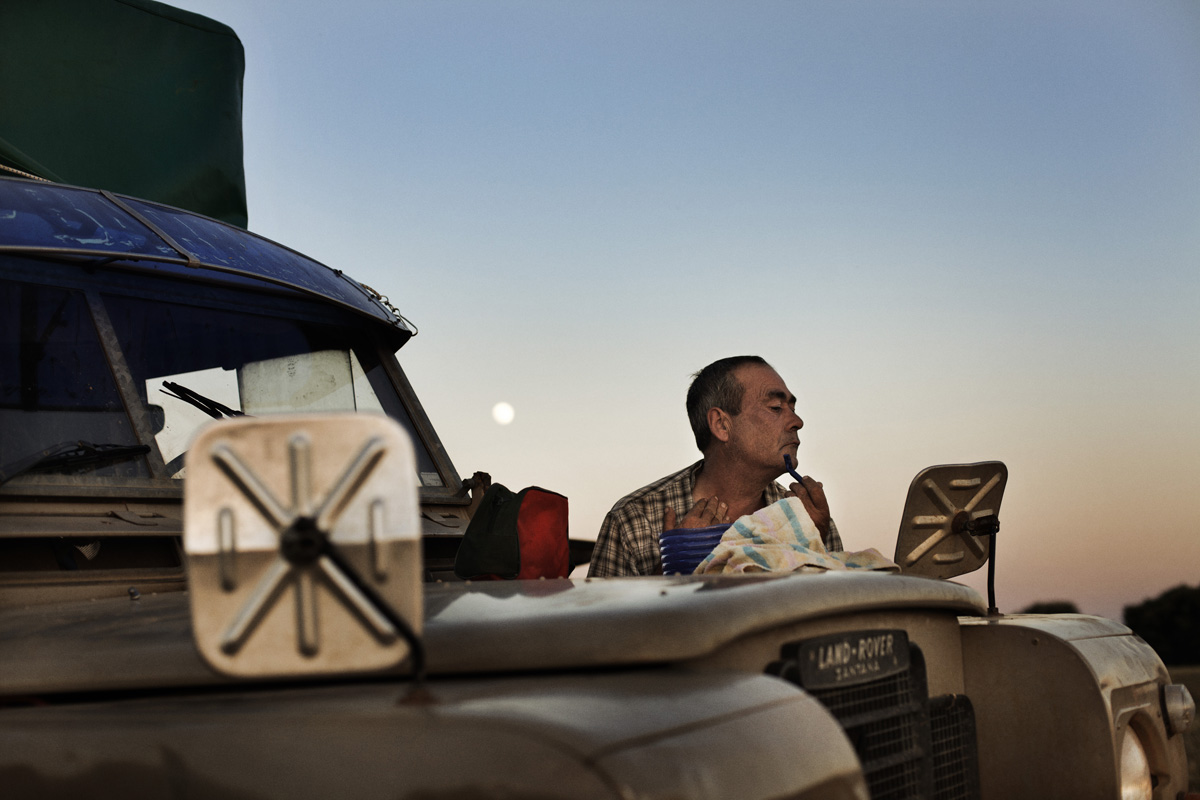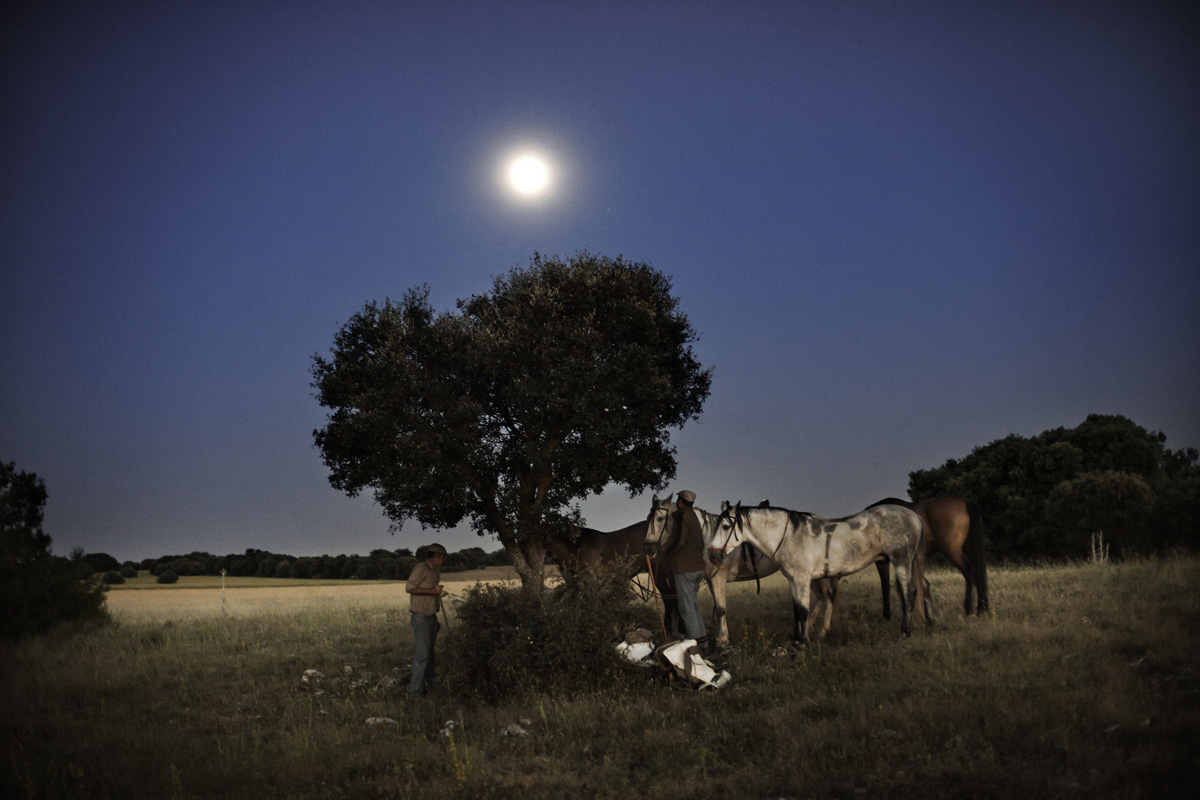It is a traditional practice about the migration of animals, led by shepherds who goes in search of mountains for fresh pasture during the summer months and warmer temperatures in the valleys of the south of the peninsula during the winter period. In the twentieth century the practice of transhumance has been gradually disappearing because of the convenience of transporting animals by truck or train, because of the lack of new labour and because of the progressive abandonment and deterioration of livestock path. It is not the case of Doña Alicia Chico Garcia cattle, the last person in Spain to keep alive this tradition. Every year, at the end of May, hundreds of cows, bulls and oxen move from the hot lands of Andalusia, in Jaen province, to the cool mountains of Aragon, in Teruel province. The Mayoral Gerardo and three cowboys, Juan Manuel, Jose Luis and Vicente lead the herd. During a month these transhumant, followed all the way by Masimo, the jeep driver which is carrying food, clothes and everything it’s needed for the journey, travel over 400 km in stages of 25 km per day. Along this path, which in Castilla-La Mancha coincides with the route of Don Quixote, pass 458 cows, 200 calves, three bulls and ten oxen, crossing mountains, small villages, rivers and roads. For Doña Alicia the modern transhumance, with trucks and trains, is not economically viable, given the number of animals that she has to move, that’s way she has continued over the years, this thousand-year-old tradition. Cowboys like Luís and Manuel gain live from other activities, but when it comes the moment of the transhumance they disconnect from the routine of the city and take leave to join the expedition. A typical day begins very early in the morning before the sunrise; after a coffee they count the cows making them passing through a human tight spot and if none is missing the march starts until noon. The second part starts after a long siesta, around 6 pm and they walk until they reach the destination, normally when it is already dark. Despite the hard work, for some of them the day is not over, as they have to guarding during night time to prevent some animals to escape and to keep herd tight. This adventure ends after almost four weeks once they reach Terriente, a small village in the Albarracin mountains. In November the livestock will be taken back to Jaen to spend the winter in a warmer environment.
